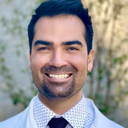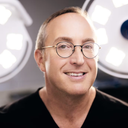Posted underRevision Rhinoplasty q&a
8 years post-op rhinoplasty for dorsal hump - is shrinking bulbous tip possible? (Photos)
Hello, I had a rhinoplasty to remove a very large dorsal hump about 8 years ago. I was really happy with the results but now that the swelling is down the tip looks bulbous and points downwards when I smile. I've asked about revision but my doctor seemed reluctant to do so and didn't seem to understand my concern. Am I being unreasonable with my expectations, or is it possible to get results like my photoshopped images on the right? Thank you!
Answers (9)
From board-certified doctors and trusted medical professionals
Dr. Jeffrey Lisiecki, MD

Dr. Jeffrey Lisiecki, MD
Board Certified Plastic Surgeon
Answer
Dr. Gianfranco Frojo, MD

Dr. Gianfranco Frojo, MD
Board Certified Plastic Surgeon
Answer
Dr. Andrew Miller, MD

Dr. Andrew Miller, MD
Board Certified Facial Plastic Surgeon
Answer
Dr. Eric M. Joseph, MD

Dr. Eric M. Joseph, MD
Board Certified Facial Plastic Surgeon
Answer
Dr. Steven M. Denenberg, MD

Dr. Steven M. Denenberg, MD
Board Certified Facial Plastic Surgeon
Answer
Dr. Jeffrey H. Spiegel, MD

Dr. Jeffrey H. Spiegel, MD
Board Certified Facial Plastic Surgeon, Board Certified in Otolaryngology – Head and Neck Surgery
Answer
Dr. William Portuese, MD
Dr. William Portuese, MD
Board Certified Facial Plastic Surgeon
Answer
Dr. Mats Hagstrom, MD (license on probation)
Dr. Mats Hagstrom, MD (license on probation)
Board Certified Plastic Surgeon
Answer
More Revision Rhinoplasty Questions
See all Revision Rhinoplasty Q&AWE SEND PRETTY
EMAILS
What’s trending? Who’s turning heads? Which TikTok myths need busting? We’ve got you. No fluff, no gatekeeping—just real talk. Get our free, unfiltered newsletter.
